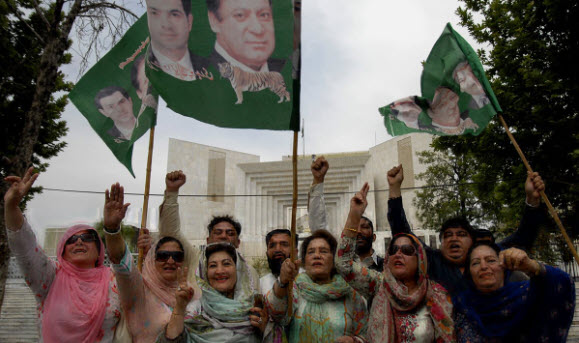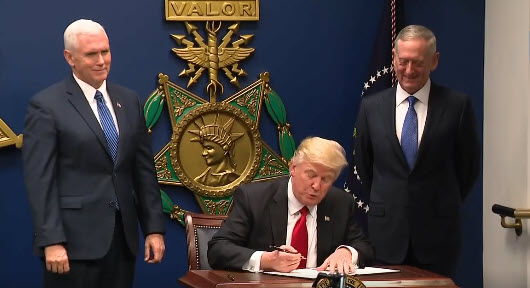 Mohammed Asim, White Star
Mohammed Asim, White Star
By Osama Siddique
It is almost imperative for anyone who wants to be taken seriously these days to comment on the Panama Papers case. So here is my endeavour. But allow me first to provide some context.
Pakistan faces a crisis of justice. That is to say very few criminals are brought to justice and quite a few innocents are unjustly punished. A majority of criminal prosecutions fail due to obsolete evidentiary laws and equally obsolete judicial approaches.
The system also furnishes many legal and procedural loopholes to the mighty and the resourceful and offers few protections for the weak and vulnerable. Meanwhile, civil disputes take years to resolve in our courts, thereby consuming innumerable lives, wasting financial resources and often forcing the desperate or the opportunist to resort to criminal means.
Many people are also forced to settle their claims outside courtrooms — frequently with inequitable outcomes due to the inequality of bargaining power.
Such is the state of affairs at the institution entrusted with the delivery of justice that people have little confidence in the effectiveness of the judiciary. But you will seldom hear this being analysed in any great depth or with necessary seriousness from the ordinary citizens’ point of view. It is a yawn-inducing topic, not exciting and sensational enough to become the stuff of prime-time television.
To make matters worse, instead of frenetic efforts to assert itself, the judiciary appears to be on the retreat. The most recent capitulation is the meek surrendering yet again of the vital task of trying and holding terrorists accountable to military courts. The existence of a parallel and opaque system to punish crime only highlights the inadequacy of the mainstream criminal justice system.
This is quite apart from the separate and serious concerns regarding the military courts’ compliance with due process and human rights safeguards. There is a general tendency to think of such things as first world niceties in a country besieged by brutal terrorism. However, a state without a higher moral ground can eventually become indistinguishable from the violent and the lawless.
I digressed. I meant to discuss the Panama Papers case. But do indulge me a little more as I need to first broadly outline the main players in our system of justice as well as their respective challenges, for that is the milieu in which this case was adjudicated and decided. It is true that this system is fractured at several levels.
The police still searches for a clear post-colonial vision of goals and governance, lacks autonomy, has poor technical skills and faces many 21st century challenges with 20th century equipment and a 19th century mindset. The prosecution is fledgling, under-resourced, under-confident and, therefore, inadequate.
The prisons are unfamiliar with the concept of rehabilitation and probations, and parole services exist largely as concepts on paper. The judiciary often blames all these institutions for the overall failure of the criminal justice system.
There are two important things to note here. First, over the past few years – essentially in Punjab and Khyber Pakhtunkhwa – there are quite a few positives to report in all these departments and there are statistics to back improved performance (more on this at another time).
Second, these institutions are at least open to debate and critique, have mechanisms for political and public accountability and can boast of internal reform dialogues. Their internal state of affairs is not as fossilised as it may appear from the outside — there is some movement.
That cannot really be claimed about their biggest critic – the judiciary – which essentially remains aloof from reformation. Let us briefly examine this vital institution both empirically and sociologically. First, the crucial performance indication numbers – those that show delay and pendency – are not heartening to say the least.
More cases continue to come to courts than is desirable — more than the courts dispose or can ever dispose (the filters are weak; litigation is a convenient weapon to coerce and embroil one’s opponents, and to delay any official and administrative actions; there are also growing disputes in society).
More and more cases also remain stuck in courts despite some past attempts to clear backlog. Consequently, the gaps between case institution on the one hand and case pendency, as well as case disposals on the other, are growing.
While efficiency remains unequivocally a problem, quality of justice is also facing many challenges. Various publicly available surveys, scholarly writings and credible reports as well as any random conversation with citizens anywhere will highlight the huge problems there.
Institutional governance, on the other hand, is unbelievably hierarchical and centralised — all power essentially vests in the chief justices and there is no recourse if they simply dislike change. There is also no institutional pressure on them to change; the growing din of discontent in the streets notwithstanding.
The institutional culture, as a result, is one that promotes unquestioning servility, lack of initiative and embedded mediocrity amongst those occupying the lower rungs of the judiciary.
Administrative and support staff invariably lack the skill set required for tasks entrusted to them. Courts remain staunchly resistant to modern administrative frameworks for smoother operations and just, quick outcomes, such as a Case Flow Management System — something so fundamental and necessary that modern judiciaries have embraced it all across the globe.
As a consequence, there are no time limits for decisions of cases, no real judicial control over the pace of proceedings, increasingly recalcitrant lawyers, no willingness or viable mechanism for thwarting frivolous litigation and delaying tactics, and no overall judicial policy and mission.
Decision-making remains uninformed by data, performance evaluation operates on hearsay, record-keeping is abysmal and the language of justice and its beguiling processes are alien and alienating for the majority of citizens.
Let us now get back to the Panama Papers case — a case, above all, about merit and accountability. But surely it is important to first look at the judiciary’s own established safeguards to uphold the same. The judiciary often holds forth on the value of merit, transparency and accountability in other institutions. Yet it remains the only major institution where recruitment – or elevation as they prefer to call it – to the appellate courts is based on the preferences of a small group of insiders.
A constitutional endeavour to introduce a two-tier system for politically and publicly accountable judicial appointments was paralysed as the judiciary held on strongly to the rather indefensible principle of being answerable to itself alone, despite the risk of collusion and nepotism in any such scenario. The status quo, the judges insisted, ensured vital independence.
The judiciary also remains resolute that it would not agree to anything other than self-accountability. The Supreme Judicial Council and its pitifully small number of cases in the distant – and murky – past is all that there is to show for self-accountability.
Not to forget that if at all a judge finds themselves cornered into a position where they may be held accountable, they can conveniently resign and leave with all post-retirement benefits intact.
All this, of course, pertains to instances of corruption or delinquency — there is really no accountability whatsoever if an appellate judge simply does not work and spends an entire career writing nothing of note, or alternatively, writes judgments so poor that society would have gained if they had remained unwritten.
All the while we have to remember that provincial high courts are also responsible for administration of justice in their respective provinces — the aforementioned inaction or ineptitude for action, thus, adversely impacts hundreds of millions.
I should really now focus on the Panama Papers case but there is also the small matter of history. Legitimation of coups, authentication of dissolutions of elected governments under Article 58(2)(b) of the Constitution, opportunistic use of public interest litigation for holding forth over political contestations, chief justice Iftikhar Chaudhry’s brand of judicialization of politics, use of populism for self-aggrandizement and creation of a political constituency — it is a checkered institutional story indeed.
All constitutional courts are at some level political. However, in our context a combination of political upheavals, ambitious military, constitutional design and some opportunistic individuals have generated a jurisprudence on adjudication of political questions that continues to surprise and at times shock jurists and commentators all over the world. As a result, our judiciary is perhaps more political and politicized than its counterparts elsewhere.
Let us also not forget that there have been other cases like the one on Panama Papers. In the past too, we, as a nation, have spent months following seemingly interminable courtroom dramas that have resulted in judgments that comprise hundreds of pages.
During those injudicious times also, politics was brought to a standstill and desirable ways of ensuring democratic transitions, promoting political governance and resolving disputes within a federation were sidelined and discarded in favor of televised spectacles.
This, even though the challenges faced by politics actually needed more politics to resolve things. Court-administered prescriptions, thus, were unsuitable remedies, if not fatally wrong ones. This, despite many past experiences of the judiciary itself suffering and creating suffering whenever burdened by matters beyond its capacity and jurisdiction.
Add to all this its inherent unaccountability if and when it got it wrong. As if there was not already enough for the judges to do by way of protecting rights, punishing crime and resolving disputes. As if all that was being adequately done.
So when the latest court drama fever engulfed the nation, I found myself unable to offer anything even when everyone and their electrician could. And so everyone rightly suspected that I knew little of such matters. For how could someone not follow something so monumental and not believe that this judgment – this judgment alone and on its very own – will end all systemic corruption in Pakistan, firmly establish a robust system of public accountability and chalk out a clear and comprehensive future roadmap for the nation.
I confess that I remain tongue-tied still. All I can say is that let the citizens do politics. And let the judges do justice — justice for ordinary people, in everyday matters, in mainstream as well as far-flung places and on a daily basis. For that is what really matters to the people. And yet that is what never gets prioritized.
Osama Siddique is an Associate Fellow at the Institute of Development and Economic Alternatives (IDEAS), the inaugural Henry J Steiner Visiting Professor in Human Rights at Harvard Law School, and is the author of ‘Pakistan’s Experience with Formal Law: An Alien Justice’. His debut novel ‘Snuffing Out the Moon’ will be published by Penguin Random House in 2017.
This article originally appeared in The Herald on May 30, 2017.










